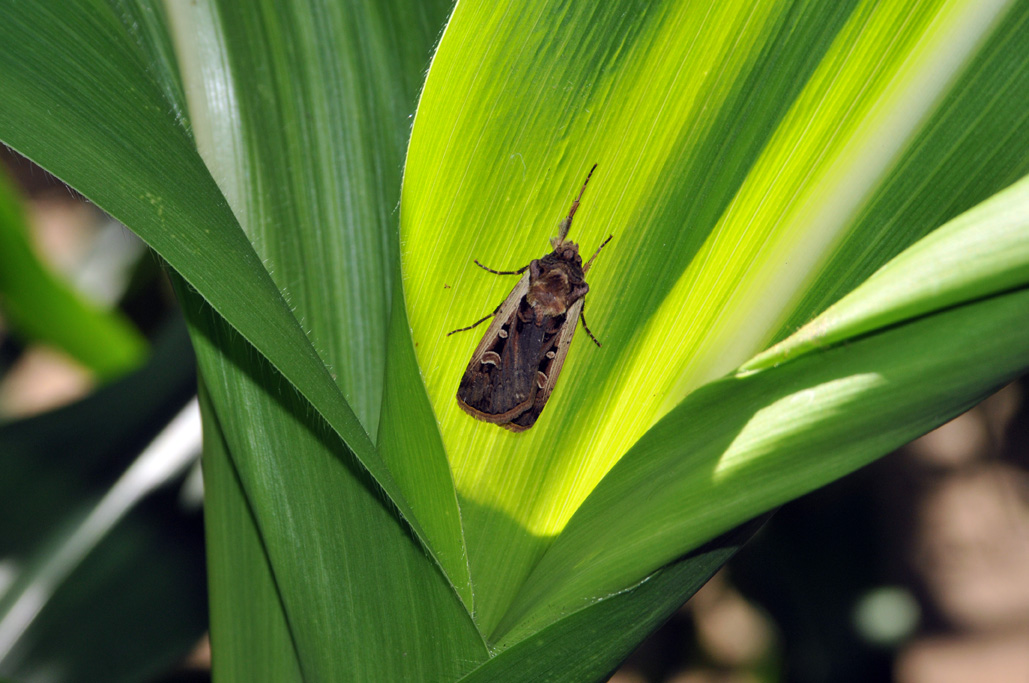Pheromone trapping began for western bean cutworm moths this week. Within just one day several cooperators were reporting catches. This is just the beginning of an extended moth emergence and flight, with their peak activity expected 2-3 weeks from now. Those in high-risk areas, i.e., sandy soils, high moth flight and WBC history, should be gearing up for field scouting of corn, even those with Bt-traits.
Scouting of pre-tassel corn should begin once multiple moths are being captured regularly. In five different areas of a field, inspect 20 consecutive plants for egg masses which are laid on the upper surface of the top leaves of corn and/or larvae that may have hatched and crawled to the whorl and begun to feed. Usually the newest, vertical leaf is the best place to look for egg masses. Young larvae need pollen to survive, and female moths are most attracted to cornfields that are just about to pollinate. However, moths will lay eggs on whorl stage corn when pre-tassel/pollinating corn is not available. After hatching, larvae immediately crawl down into the whorl for protection, and begin to feed on leaf tissue. Later damage from larvae, as they feed deep in the whorl (attacking the tassel to get at pollen), will resemble corn borer or fall armyworm damage. Initially the damage will be subtle and not economically important (or even noticeable). Later stage larvae enter the ear and feed on corn kernels and can cause economic damage, and also can exacerbate ear rots, including Gibberella ear rot.

Western bean cutworm moth waiting in the whorl during the heat of the day.
Remember that WBC larvae are no longer susceptible to most of the Bt traits in our corn hybrids (including those in SmartStax hybrids) and therefore scouting, followed by timely insecticide sprays are really the only reliable control option for the vast majority of producers that are in the zone where this insect is common, principally the northern tier of counties in Indiana, extending into Michigan and parts of Ohio. Only Bt hybrids expressing the Vip3a toxin will offer reliable control of this pest, so be sure to know what you have in your field and scout as needed. See this handy Bt Trait Table to check where your hybrids fit in terms of the pests managed.
Beginning next week, we will publish our trapping cooperator’s moth catches, that are scattered throughout the state. There is still time to order materials and begin trapping for your operation. We order our supplies from Great Lakes IPM. Stay tuned for further developments of this pest.

Trapping materials for western bean cutworm…you can do this at home!


